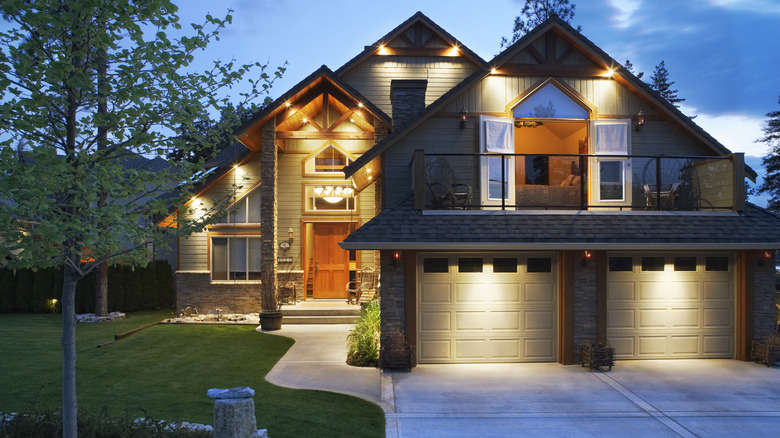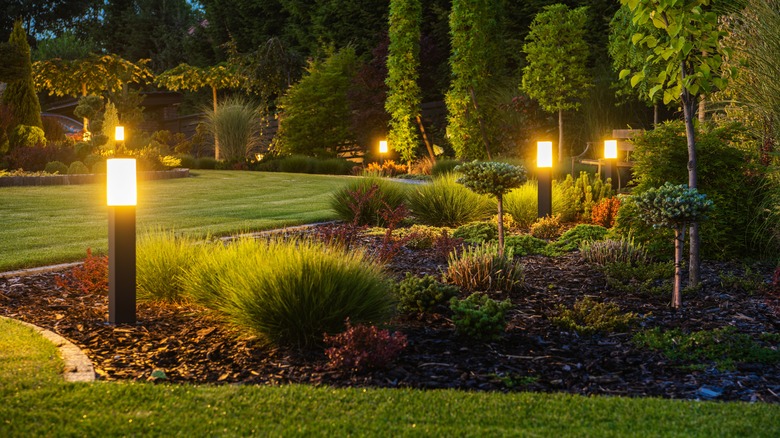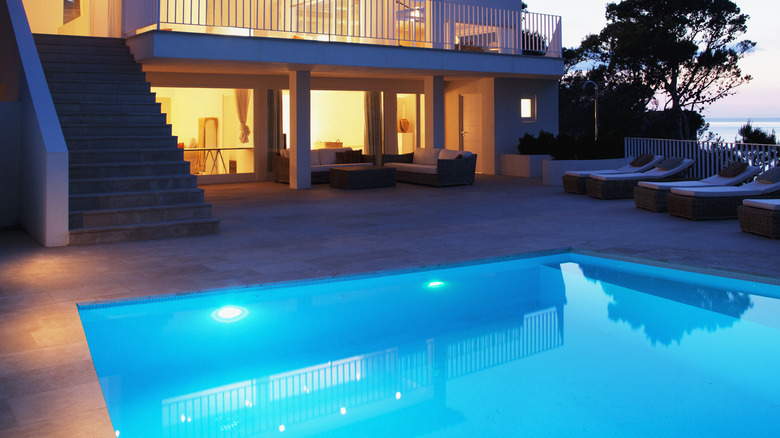Weatherproof Vs. Waterproof: How To Choose The Right Outdoor Lighting For Your Home
Lighting is a safety and entertaining essential that's a must for your outdoor space, but installing just any light fixture that catches your fancy might lead to complications, like broken lamps or water-damaged bulbs, in the future. So, to choose the right outdoor lighting for your home, you must understand the difference between weatherproof and waterproof fixtures. Although the terms are often used interchangeably, they differ from each other. Weatherproof outdoor lights can deal with the vagaries of nature and light contact with moisture like rain or water from your sprinkler system. On the other hand, waterproof lights are designed to withstand constant exposure to moisture.
While learning about the differences between the two types is instrumental, you can only select the right one after you determine the purpose of an outdoor light. For example, are you trying to brighten your patio after dark or do you need them to highlight a fountain and make it twinkle? Then, how do you ascertain that the lights you're buying belong to the weatherproof or waterproof clan? You can determine this by checking the ingress protection (IP) rating — denoted by two digits — of each light. The first digit (between 1 and 6) will tell you how well the light can resist contact with solid objects, like dust, debris, human touch, and skittering insects, whereas the second digit (between 1 and 8) denotes its tolerance against water. Higher digits offer more protection, so a light carrying a rating of IP44 will be a better choice than one rated IP33.
What are the features of weatherproof outdoor lighting fixtures?
Weatherproof outdoor lighting fixtures can handle strong winds, daily contact with dust and debris, the sun's unrelenting glare, and changing weather conditions — ones with a high IP rating won't buckle in the face of harsh weather. All this isn't to say they won't be able to handle moisture at all. They can deal with rain, accidental water splashes, and a light mist from motion sprinklers without breaking down. However, the level of protection will depend on each lighting's IP rating (usually between IP44 and IP66).
Since these light sources are meant to happily shoulder fluctuations in temperature, they come with a protective outer coating of paint, stainless steel, or rust-free aluminum to keep its color and lighting filament safe. Simply put, weatherproof outdoor lighting fixtures are ideal for illuminating your exteriors after dusk. You could even follow a few tips for maximizing outdoor lighting to improve home security. Nevertheless, they shouldn't be installed near water sources, like swimming pools and fountains, where they'll have to come into contact with moisture continuously. Even if you get a light boasting a rating of IP66, it won't be able to handle waterboarding with panache. So, water will seep in eventually and render the bulb useless. Due to this limitation, weatherproof outdoor lighting is generally cheaper than its waterproof counterparts.
What are the features of waterproof outdoor lighting fixtures?
The most defining feature of waterproof outdoor lighting is that it can be submerged in water without concerns. This means you can use them to light up your pool and arrange them around your backyard fountain or other DIY water features you can add to your backyard to attract more birds. They're also ideal for outdoor lighting in locations that receive heavy rainfall for the better part of a year. However, the amount of water they can handle and for how long without conceding defeat depends on their IP rating — which is generally IP67 or IP68.
To elaborate, a fixture with a rating of IP67 has limited protection against dust and can be submerged in 1 meter of water for a duration of up to half an hour. On the flip side, IP68-marked lighting sources can handle dust and 1 meter of water for an extended period. Usually coated using silicone, epoxy resin, PVC, polyurethane, or polyolefin, waterproof lighting comes with carefully sealed gaskets and connections to ensure water doesn't seep in through the holes. Due to the higher level of protection, such lights cost more than weatherproof ones. Further, the cost is dependent on the type of coating used. For example, ones sealed using silicone or polyurethane glue command a higher rate than ones sealed with epoxy resin.


